When used properly, hashtags are amazing social media marketing tools. They can be used to highlight trends, tie campaigns to chosen keywords, isolate conversations, and attract consumers who may be looking for your brand’s products or services.
Using hashtags correctly can ignite a campaign on social media, but improper use can cause a good amount of damage to your brand’s reputation. Here are some examples of best practices for hashtags, as well as how to avoid common mistakes.
1. Less is more: Like all great things in life, hashtags should be used in moderation, and should be done in a way that is effective and not annoying. Unless it’s Instagram, never use more than 3 hashtags in a single post or tweet. With that said, here’s a little fun fact about Instagram (and only Instagram): Interactions are highest on posts with 11+ hashtags. Just make sure they’re relevant!
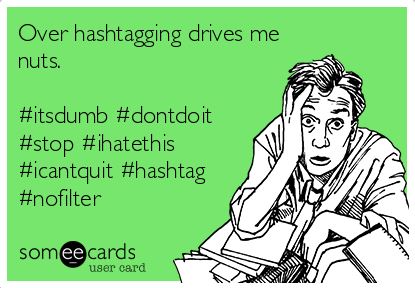
2. Avoid #SuperLongHashtagsBecauseTheyAreANNOYING: Seriously, just don’t do it. Not only do these long hashtags take up too much of your 140-character Twitter limit, they’re confusing and do not help drive search results to your page. When writing a long hashtag (especially from a phone or tablet) it’s also easy to spell a word wrong and defeat the entire purpose. Here’s an example of a long/bad hashtag:

3. #Dont #make #every #word #a #separate #hashtag: People fail to realize that by doing this, someone is only going to find their post if they happen to be searching for #dont or #make or #every. Have you searched for single words like this before? Me either.
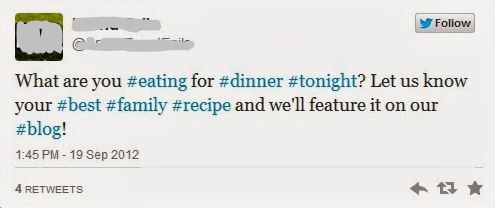
4. Be specific: When I promoted this article on Twitter, I used the following hashtags: #DigitalMarketing #SocialMediaMarketing and #InternetMarketing. I avoided using generic hashtags such as #marketing or even #socialmedia in my effort to reach my target audience, which is internet marketers or those interested in the topic.
5. Be original: When launching a new campaign, launch a new, original hashtag along with it. Borrowing a trending hashtag will not get you anywhere. Be creative and unique!
6. #UseCapitalLetters: When using a hashtag with multiple words, capitalizing the first letter of each word is a great idea. It makes it easier to read and can avoid disasters such as this one that happened to poor Susan Boyle:
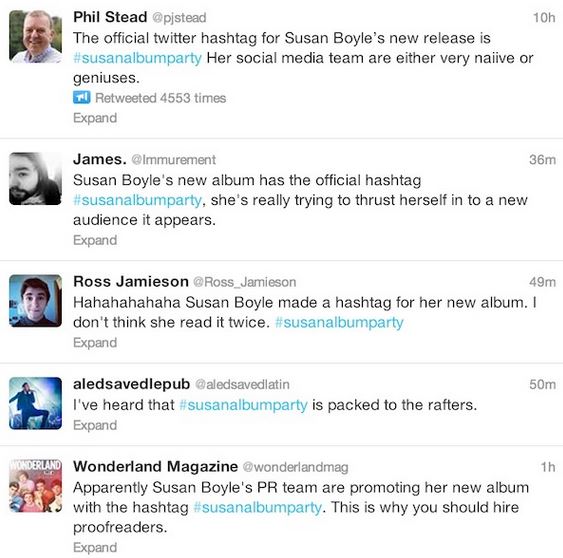
7. Keep it easy to spell and remember: When creating your own unique hashtag for a campaign, keep it simple and catchy! Using overly long, complicated hashtags will only result in less engagement. Some good examples of simple, catchy hashtag campaigns are NASA’s #GlobalSelfie and Marc Jacobs’ #CastMeMarc.
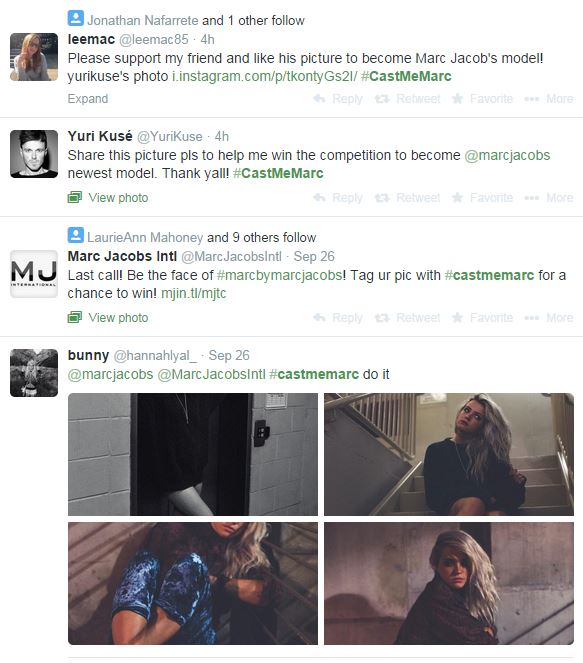
8. Think it through: Epic hashtag disasters such as #susanalbumparty and #McDStories would have been avoided if they were evaluated by enough people. Take the time to put some thought toward every possible interpretation of a hashtag before it is posted. If you do post a hashtag and then your campaign takes a turn in the wrong direction, have a backup plan ready so you can react quickly and effectively.
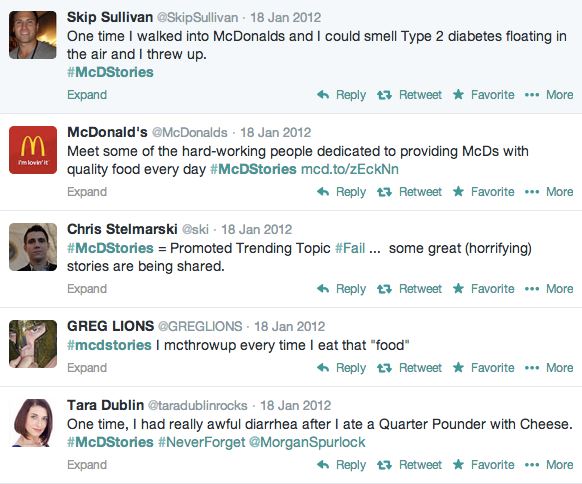
Do you know any hashtag best practices that you feel we’ve left out?
Let us know in a comment!




.jpg)